International Research Journal of Engineering and Technology (IRJET) e-ISSN: 2395-0056

Volume: 09Issue: 07| July 2022 www.irjet.net p-ISSN:2395-0072

International Research Journal of Engineering and Technology (IRJET) e-ISSN: 2395-0056

Volume: 09Issue: 07| July 2022 www.irjet.net p-ISSN:2395-0072
1,
Smt. T D Shashikala2
1 P G Scholar, Department of Electronics and Communication, University B.D.T College of Engineering, Davanagere 577004, Karnataka, India
2Associate Professor, Department of Electronics and Communication, University B.D.T College of Engineering, Davanagere 577004, Karnataka, India ***
Abstract: Due to contagious pests and illnesses that have been hurting agricultural products recently, agriculture businesses all over the world have suffered productivity and financial losses. The agriculture industry has a lot of potential to meet the growing demand for food while also producing meals that are wholesome and nutritious. Farmers find it challenging to identify crop insects since pest attacks severely damage and reduce the quality of the produce. The early detection of agricultural insects by an autonomous insect identification system based on computer vision and data processing enables farmers to increase crop productivity. In order to clarify the morphologies of insects, computer image processing techniques are frequently employed to pre-process, divide, and extract features from crop pest images and then make use of the machine learning algorithm (KNN) in order to classify different crop pest. The current work has been implemented using MATLAB 2019b and the Image AnalysisToolbox
Keywords: crop pest, computer vision, machine learning,KNN
Infectious diseases and pests have been affecting agricultural crops in recent years, resulting in productionlossesandfinanciallossesfortheagricultural business around the world. The agriculture sector has enormous potential to meet rising food demands while also providing healthy and nutritious meals. Crop insect identification is a difficult undertaking for farmers becausepestattacksruinalargeamountofthecropand decrease its quality an autonomous technique for identifyinginsectsbasedoncomputervisionandsignal
processingyieldsquickerrecognitionofagriculturalcrop pests at early stage, enabling farmers to increase crop productivity. Throughout this study, digital image processing techniques are often used to perform pre processing, segmentation, and extraction of features on croppestphotographsinordertointerprettheshapesof
insects. while using artificial neural networks and some other machine learning approaches (ANN), This insect shape detection approach functions effectively and yields correct results for crop pests with round (perfect circle), obovate(ovule), triangular, and rectangular shapes.Afterdetectionofvariousinsectshapesthe next isclassificationoftheinsectswhichisdonewiththehelp of machine learning algorithm specially K nearest neighbouralgorithm(KNN).
Thegreatestvarietyofanimalsonearthcanbefoundin insects. Crop pest (Insects) can be discovered in any surroundings, including wetlands, rainforests, and steppes, and sometimes also in incredibly brutal conditionslikepoolsofpetroleum,exceptfromtheopen sea.Insectsareconsidered asthemost adaptiveformof life since they dominate all other animal species by a widemargin.Themajorityofinsectsplaysignificantrole in maintaining both the human health and the environs. some insect represents a major threat not only to the plants but also a major threat to human health. Crop pests, such as seed eaters, herbivores, and diseases (including insects, fungi, germs, and viruses), in the worst case circumstances, may result in decreased productivity or complete crop loss. Agricultural pests havethepower to destroy entirecrops intendedtofeed hundreds of people in addition to destroying gardens. Farmersfightavarietyofpestseveryyeartoensurethe successful growth of their fruits, vegetables, and grains. In the agricultural sector, locusts are well known. Large swarmsoflocustscanreach460squaremilesinsizeand destroy the plants all around them. The damage is terriblebecausetheymayeattheirbodyweightinplants everyday.IntheUnitedStates,maizeisaveryimportant crop and corn rootworms have just recently become an issue for farmers due to their resistance to pesticides. Thereare50,000 80,000differentinsectspeciesthatfall undertheumbrellaterm"truebug,"althoughaphidsand whiteflies are the most common genuine bugs. In addition to feeding on the sap of plants and weakening them (especially when these real bugs attack in huge numbers), these pests are also known to feed on the
International Research Journal of Engineering and Technology (IRJET)

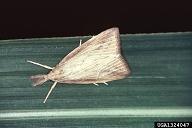
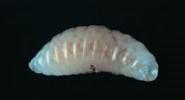
e-ISSN: 2395-0056
Volume: 09Issue: 07| July 2022 www.irjet.net p-ISSN:2395-0072
stalks and blooms of plants. Even while they are destructive on their own, they can also spread to plants deadlyvirusesanddiseasesthatcanfurtherinjurethem.


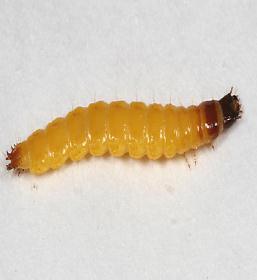
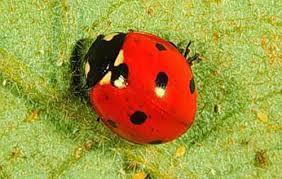
The proposed computer vision system is presented in Figure 1. An image is first pre processed, which could include data representation that is obviously correct, enhancement,orrestoration.Afterfeaturesareretrieved for breaking the image down into its constituent parts, such as separating various objects by removing their boundaries, which is basically a segmentation process, the a divided (segmented) picture is only sent to a classifier or an image understanding system. Image categorization is the process of grouping different regions in to one of the multiple objects, each bearing a label. To give the descriptions, an image identifying system creates links between the various items in a scene. Segmentation is a key component of computer vision systems since errors in this process have a tendencytoslideuptomorecomplexprocesseslateron, makingthetaskathandmoredifficult.
Inthisresearch,thewritersidentifiedplantdiseasesand tookintoaccountthosethataffectbothleavesandfruits. Uses computer based picture analysis methods to quickly and thoroughly identify pest [1] This author concentratedonatechniquetofindareasofcitrusleaves that were diseased. Citrus canker, anthracnose, overwatering, and citrus greening are the four different forms of citrus illnesses. Pre processing, colour space conversion, Gray Level Co Occurrence Matrix are used UsingtheGray Level Co OccurrenceMatrixitispossible to extract features such as brightness, energies, uniformity, and entropy. The classification is done using the two (SVM) classifiers, SVMRBF and SVMPOLY [2]. The process used here identifies medicinal plants relyingontheirdistinctivecharacteristics Thegrayscale version of the image is obtained from the input colour pictures. Calculate the border histogram from this grayscale image. To do this, use a clever edge detection technique. The suggested technique calculates the subsequent information, which is the area. In Ayurveda medications, the medicinal plants are utilized. It takes
prior expertise to manually identify therapeutic herbs. The RGB colour spaces are used to create the colour histograms. This medical approach is helpful in the treatment of a number of persistent problems such as hyperglycaemia, malignancy, increased blood pressure, andskindisorders,etc.Butbecausethespecialistsdon't share their knowledge with others, the knowledge of these plants dies with the experts. As a result, it's essentialtoutilizethetechnologiesandcreateamethod foridentifyingandusingmedicinalplantsbasedontheir images. [3]. Pests in stored grain can be detected using spectral residual saliencydetectionasanedgedetection technique. The edge of the pests is bright and obvious, so it can locate them with accuracy. It offers a new technique for detecting pests in stored grain and enhances the edge detection effect. [4]. In this study, researchers employed image processing methods to identifyweed. Theautomaticsprayerwillthengetinput from the regions where weeds were detected This is a robotic vehicle that only sprays weedicide in locations whereweedshavebeenspotted[5].
Since this work is intended for all type crop insect detection the dataset on insects available in the https://images.bugwood.org/.http://www.nbair.res.in/ database.php.andhttps://www.ipmimages.org/.Is consideredherefordetectionandclassification.
International Research Journal of Engineering and Technology (IRJET)

e-ISSN: 2395-0056
Volume: 09Issue: 07| July 2022 www.irjet.net p-ISSN:2395-0072
The collected insect image dataset is further processed asbelowblockdiagram
Dataset of images Image selection pre processing
Shape feature extraction Segmentation
model training (KNN)
Insect shape detection
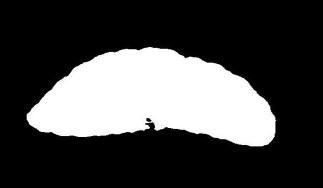
Prediction Quarry image output
Fig3: block diagram of insect shape detection
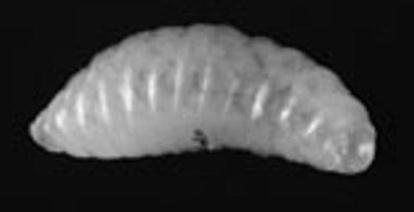
Braconid wasp’s is considered here for this automatic detection
Automatic picture based thresholding is achieved using Otsu's technique in field of computer vision and image processing.Initssimplestform,thealgorithmgenerates asingleintensitythresholdwhichcategorizespixelsinto two group, foreground and background. By maximizing the interclass variance or, equivalently, reducing the intraclassintensityvariance,thethresholdisestablished, herecalculatedthresholdlevelis0.4
Fig 6: Binarized image (Otsu’s thresholding)
Themethodofsegmentinganimageinvolvesbreakingit up into different regions. According to the present findings, Sobel operators outperform all other edge detectorsintheagricultural sectorwhenitcomestothe recognition of different insect shapes. The Sobel edge operator is taken into account in this project work for insect shape detection in field crops since it only provides information about the continuous edge of an object.
The stages listed below are used in the Sobel edge detectionmethod:
Step 1: Readingtheinsectimageasinput
RGBTOGRAYCONVERSION:Grayscaleimagecreatedby convertingtheoriginalRGBinsectimageusingthebelow mentioned equation; Greyscale intensity = 0.299R + 0.587G+0.114B;wherethe lettersR,G,and Bstandfor thecolourred,green,andblue,respectively.












Step 2: The masks Gx and Gy (gradient in x and y directions, respectively) are applied to the input pest image.
Step 3: It utilizes the gradient and Sobel edge detection technique.
Step 4: On the insect image, independent Gx, Gy mask alterationiscarriedout.
Step5: determine an image's gradient. |G|=JGx2+Gy 2, whereGxdenotesagradientinthex directionandGy denotesagradientinthey direction.
Step 6: Theedgesoftheinsectimagearedeterminedby theabsolutemagnitude.
Fig 5: input image is converted into gray scale with size 512*512

e-ISSN: 2395-0056
Volume: 09Issue: 07| July 2022 www.irjet.net p-ISSN:2395-0072
Table1:SURFcalculatedfeatures
Validcorners 153 orientation 153*1single location 153*2single Features 153*64
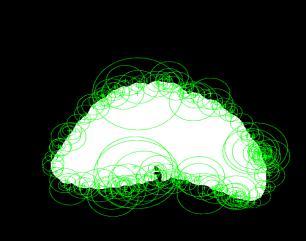
TheEigenfeaturedetectordetermineswhereanimage's corners are located for the Eigen feature detector, each pixel will normally evaluate the picture gradient (G) in thexandydirections,whichareGxandGy,andthenthe correlationmatrixforeachpixelisproduced
These retrieved features have been used to identify the variousinsectformsseeninagricultural.
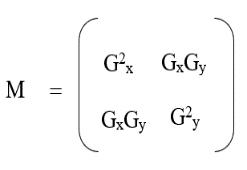
The response of every pixel can be calculated using a formula. R=min (1,2), The pixel could be seen as a cornerpoint,onlywhentheresponseisgreaterorlarger thanthethresholdvalue.(corner=R>threshold).
Fig11:rectangleshapeisdetectedinabraconid wasp’s
insectimage(clickbeetle)
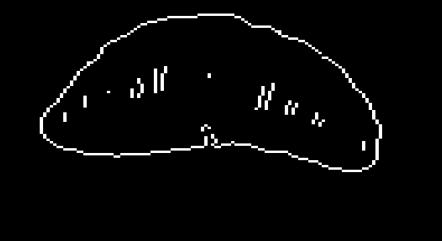
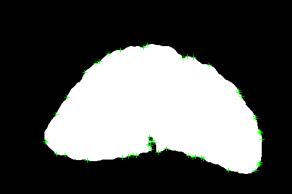
In computer vision, a local feature detector and descriptor known as Speeded Up Robust Features (SURF)isemployed.Itiscapableofperformingavariety of tasks, including object identification, picture registration, classification, and 3D reconstruction interest points can be found by using SURF. The algorithm comprises two main components: identification of possible interest points, neighbourhood description,andmatching.
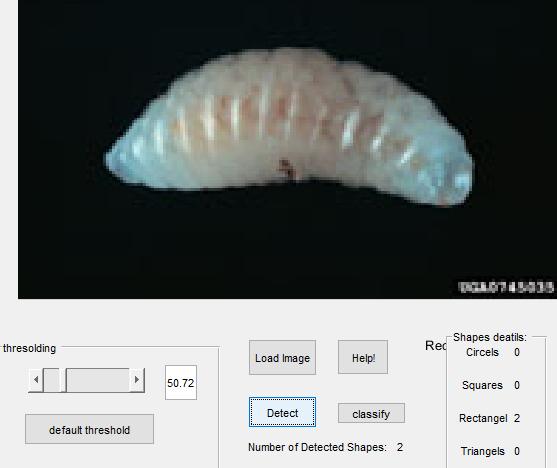
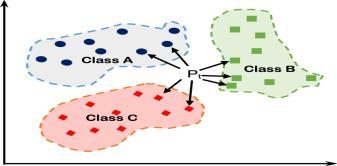
Fig 7: Image with Sobel edge detection Fig 9: corner detected insect image using detectmineigenfeature function Fig 10: SURF feature extracted inect image

In this work for classification of different insect images the K nearest neighbour (KNN) machine learning algorithm is selected. The "k nearest neighbours" procedure, often known as KNN or k NN, it is a supervised learning classifier that employs closeness to classify or predict how a single data point will be grouped in a non parametric setting. Here in this work, we mainly define the three classes for insect classification as click beetle which belongs to class A, moth belongs to class B and sward grass which belongs to class C, and Pt in figure 12 is a new data point or quarryimagetoclassify
Fig12:KNNdiagram
International Research Journal of Engineering and Technology (IRJET) e-ISSN: 2395-0056

































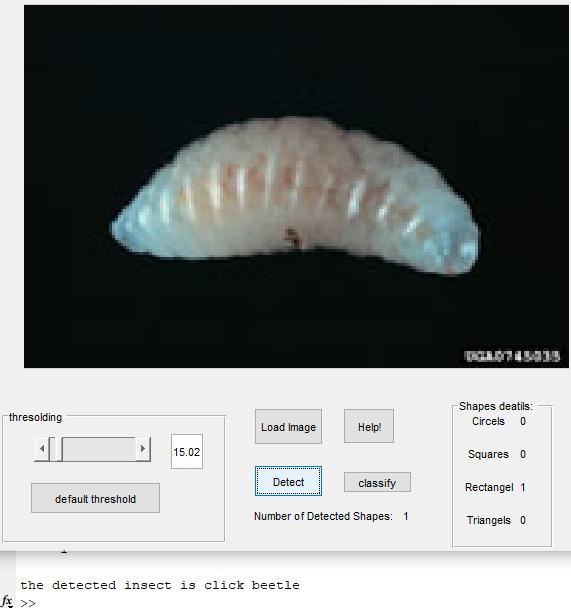

Volume: 09Issue: 07| July 2022 www.irjet.net p-ISSN:2395-0072
Determining Distance Metric: Despite the fact that there are many different distance measures available, for this project we have used the Euclidean distance. the most used distance metric is the Euclidean distance (p=2), which can only be employed with real valued vectors. Theformulabelowisusedtodeterminethestraight line distancebetweenthequery locationandtheotherpoint beingmeasured. Whered(x,y)isthedistance. DEFINING K VALUE: The k parameter in the k NN technique specifies how many neighbours will be examined to determine a particular query point's classification Hereinthis work,weselectthek valueas 3
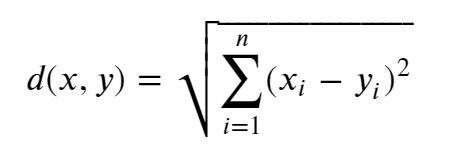
International Research Journal of Engineering and Technology (IRJET) e-ISSN: 2395-0056

Volume: 09Issue: 07| July 2022 www.irjet.net p-ISSN:2395-0072
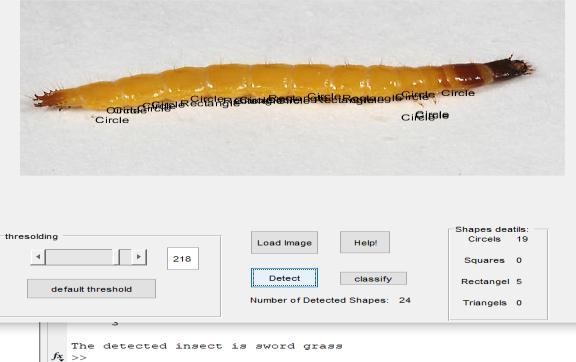
insect image to one of the classes which it belongs to. Here mainly consider the three classes like click beetle, moth and sward grass the machine learning algorithm helps in classifying one the insect to either off the class theinsectbelongs.Thismodelprovestoworkforallthe croppestimages.
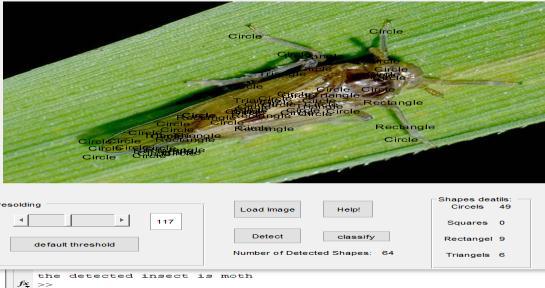
[1] Detection of plant leaf diseases using Image ProcessingFirstAuthor1,SecondAuthor2,Third Author31MariaMargaretJ(162MCA31)2Shyla J (162MCA33) 3Ms. Senthil Vadivu 1, 2 Student, Dept. of MCA, Jyoti Nivas College 3Asst prof, Dept.ofMCA,JyotiNivasCollege).
[2] Unhealthy region of citrus leaf detection using imageprocessingtechniquesArticle·April2015 DOI:10.1109/I2CT.2014.7092035
[3] Identifying Healthy and Infected Medicinal Plants Using Canny Edge Detection Algorithm and CBIR Vinita M. Tajane, Computer Science & Engineering, Rajiv Gandhi College of Engineering, Research & Technology Chandrapur, India, E mail: vinitatajne@gmail.com. Prof. N.J.Janwe, Department of Computer Technology, Rajiv Gandhi College of Engineering, Research & Technology, Chandrapur, India, E mail: Nitinj_janwe@yahoo.com
Insect detection at the early stage is considered as a challenging task for the formers in agriculture sector. The proposed work effectively detects the insect shape at the early stage by using different image processing technique like image reading and analysis of images, edge detection, extraction of features and training, later the detected shapes in an insect image are classified under different classes using machinelearning and here classification model is developed using K NN algorithm to classify the insect into three different classes. Different insect images were evaluated in this experiment, and it was discovered that they all performedwell.Thisworkcontributestoenvironmental maintenance by reducing the cost and use of pesticides in agriculture and by offering an effective approach for crop pest shape recognition at the initial stages of crop development and insect classification, which leads to cropmanagement.
[4] Methodforpestsdetectinginstoredgrainbased on spectral residual saliency edge detection a) College of Information Science and Engineering, Henan University of Technology, Zhengzhou 450001, China b) Key Laboratory of Grain Information Processing and Control, Henan UniversityofTechnology,MinistryofEducation, Zhengzhou 450001, Chinac)HenanAcademy of Science, Applied Physics Institute Co., Ltd, Zhengzhou 450001, China d) Luoyang Institute of Science and Technology, Department of Computer and Information Engineering, Luoyang471000,China.
[5] Quality Monitoring System in Agriculture Using Image Processing Ranganatha Gowda L R Under Graduate BE student, SIET, Tumkur, Karnataka; Tel: 8105108424 Email: ranganathgowda6@gmail.com
[6] C.H. Chen, Pattern Recognition and Computer Vision, World Scientific, USA, 1993.F.J. Leong, A.S. Leong, “Digital Imaging Applications in Anatomic Pathology”, Advances in Anatomic Pathology”,vol.10,pp.88 95,March2003.
[7] P. Arena, A. Basil, M. Bucolo, L. Fortuna, “Image processing for medical diagnosis using CNN”, Nuclear Instruments and Methods in Physics Research,vol.A497,pp.174 178,January2003.
International Research Journal of Engineering and Technology (IRJET) e-ISSN: 2395-0056 Volume: 09Issue: 07| July 2022 www.irjet.net p-ISSN:2395-0072
[8] Bussard,V.Martin,S.Moisan,“Acognitivevision approach to early pest detection in greenhouse crops”,Computersandelectronicsinagriculture, vol.62,pp.81 93,July2008.
